The Caribbean entices all types of travelers for its extraordinary beaches, tranquil sea, and laidback charm. Most trips are slotted for the winter and early spring to escape frigid northern latitudes for reliable sunshine, yet visiting at this time also coincides with the most crowds and priciest accommodation and airfare. Visiting during summer and fall will see considerable savings, but there’s an increased chance of tropical storms, especially in the Bahamas, Puerto Rico, and Jamaica. Though a severe hurricane is unlikely to happen during your trip, it’s nice having peace of mind heading into a Caribbean getaway. Read on to find out which 9 islands are your safest bet to visit during the Caribbean hurricane season.
Trying to decide which Caribbean island is right for you? Check out our ultimate cheat sheet on where to go in the Caribbean.
Aruba
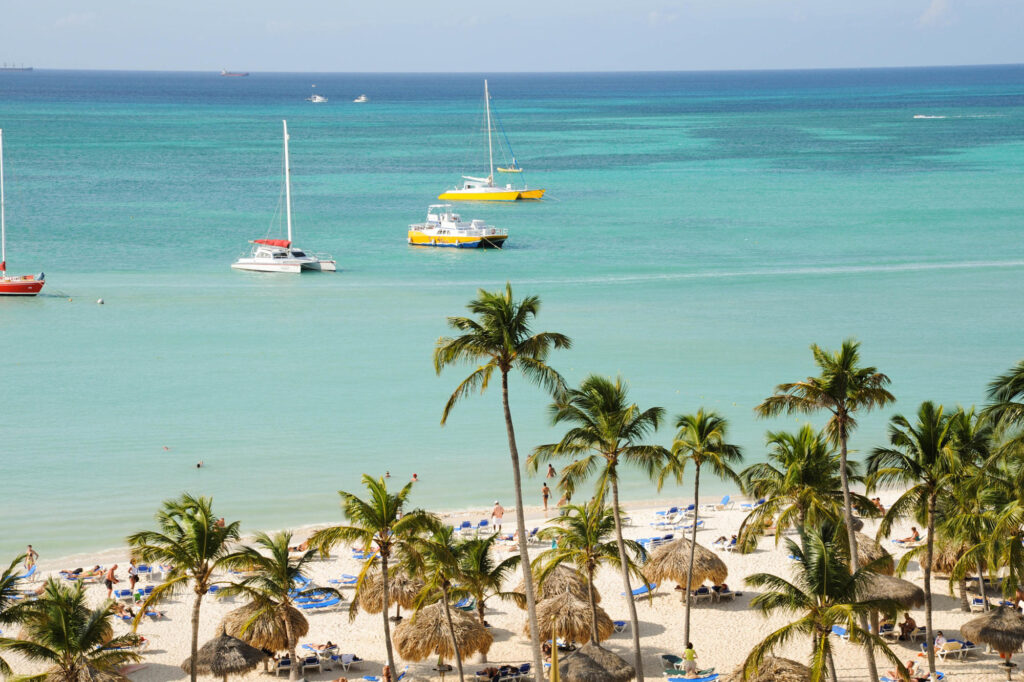
Lying just 15 miles off Venezuela’s coast, Aruba’s southerly location is well below the hurricane belt. The most recent storms to graze Aruba were Hurricane Felix in 2007, passing 60 miles away and causing only caused minor damage to the Dutch territory, and Hurricane Matthew in 2016, causing minimal damage mostly contained to coastal erosion. Summer in Aruba sees temperatures in the mid-80s, though reliable winds provide a refreshing breeze. Aruba’s capital, Oranjestad, is characterized by picturesque Dutch architecture and brightly-hued facades housing local eateries and shops. The surrounding west coast beaches are best for swimming in the calm turquoise sea, including the resort-lined golden strand of Eagle Beach and Hadicurari Beach. For smaller crowds, make the trek to Aruba’s southern tip for Baby Beach – a stunning horseshoe-shaped bay lined with powdery white sand. Swimming on the more rugged east coast is restricted on many beaches. However, the region is a hiker’s paradise, especially in Arikok National Park. A network of trails leads through desert landscapes of cacti to extraordinary coastal scenes of craggy cliffs and deserted beaches. The six-mile roundtrip trek to Conchi is worth the effort to swim in a natural pool protected from the crashing waves by a ring of weathered rocks.
Our Aruba Hotel Pick: Paradera Park Aruba
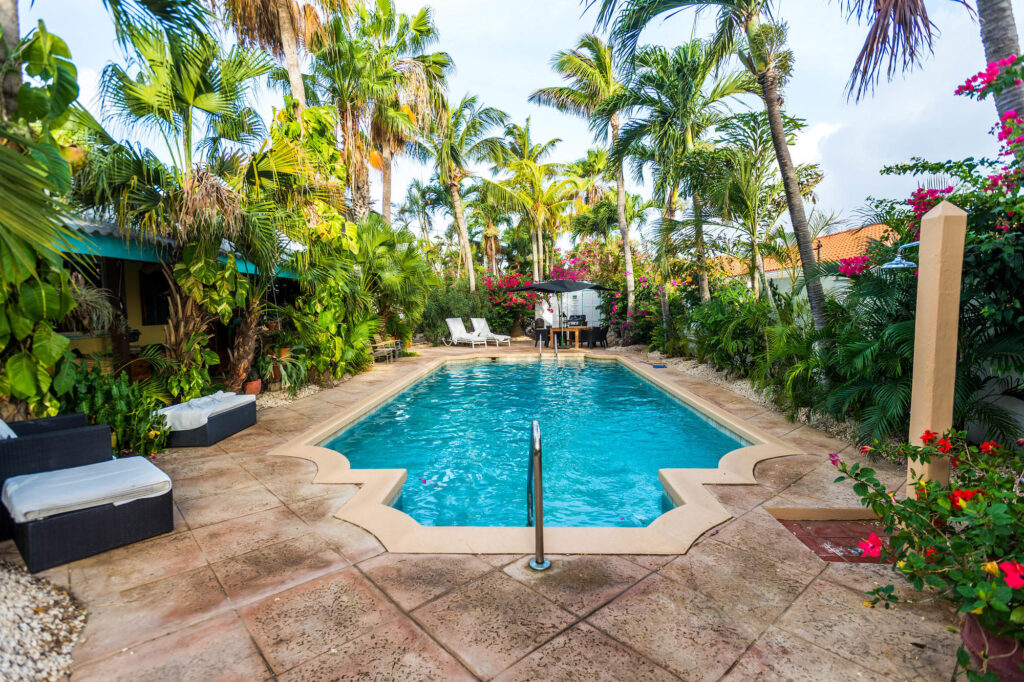
The Paradera Park Aruba offers secluded sanctuary in Aruba’s interior away from the heaviest tourist traffic. The hotel’s tropical gardens, gorgeous pool, and guest rooms with furnished balconies and kitchens make for a restful base for self-catering travelers to explore Aruba.
Bonaire
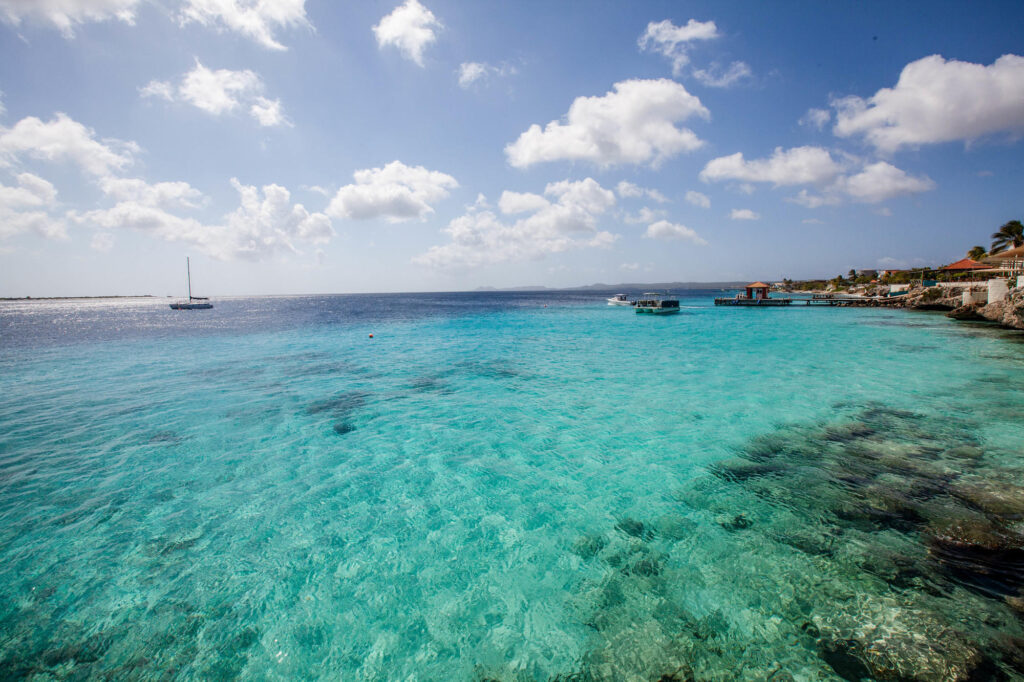
Bonaire’s most recent encounters with hurricanes were back in 2007 and 2016, just like Aruba. Average daily highs in the summer reach the mid-80s, while September and October experience the most rainfall. Although Bonaire’s desert-like interior may appear sparse, below the surface lies one of the Caribbean’s most accessible and magnificent coral reef systems. The entire coastline and immediate offshore area is protected within Bonaire National Marine Park, which includes numerous dive and snorkel sites accessible from the shore. Farther offshore, divers will find the sunken 236-foot Hilma Hooker and Sampler – a reef full of seahorses, sea turtles, and eels among towering sponges and coral reminiscent of the island’s desert landscape. On land, Bonaire has more on offer than it’s usually given credit for. For instance, Washington-Slagbaai National Park contains salt ponds, mangrove forests, volcanic rock formations, and isolated beaches in an area comprising 20% of Bonaire’s landmass.
Our Bonaire Hotel Pick: Harbour Village Beach Club
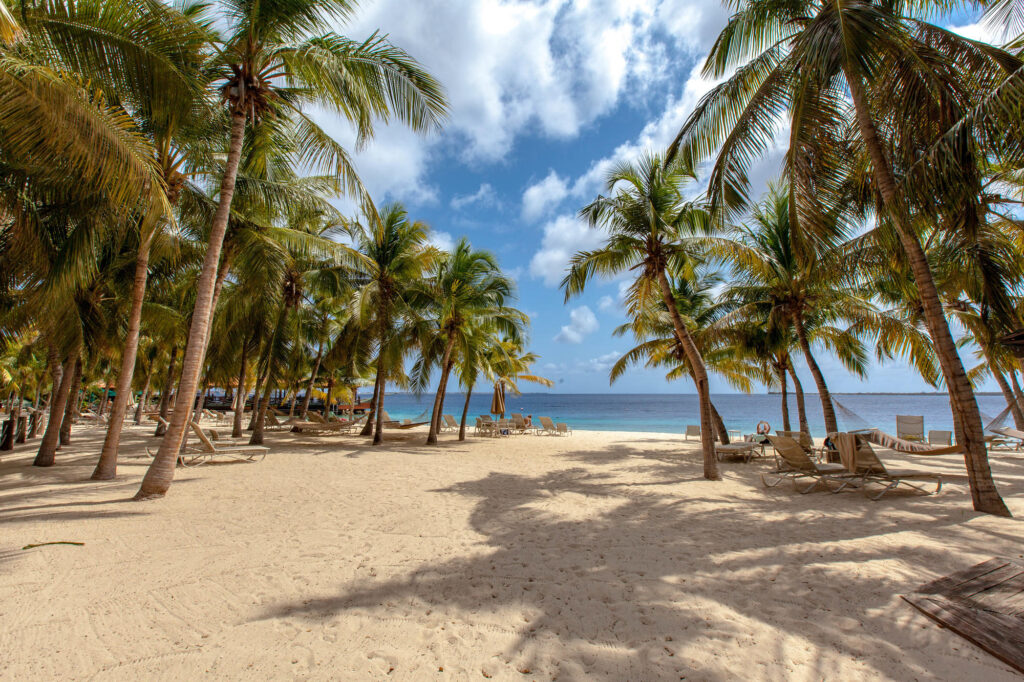
The Harbour Village Beach Club packs a wealth of amenities on one of the most beautiful sand beaches in Bonaire. The property features two pools, a spa, a restaurant, plush beachside cabanas, and a vibrant coral reef just offshore.
Curacao
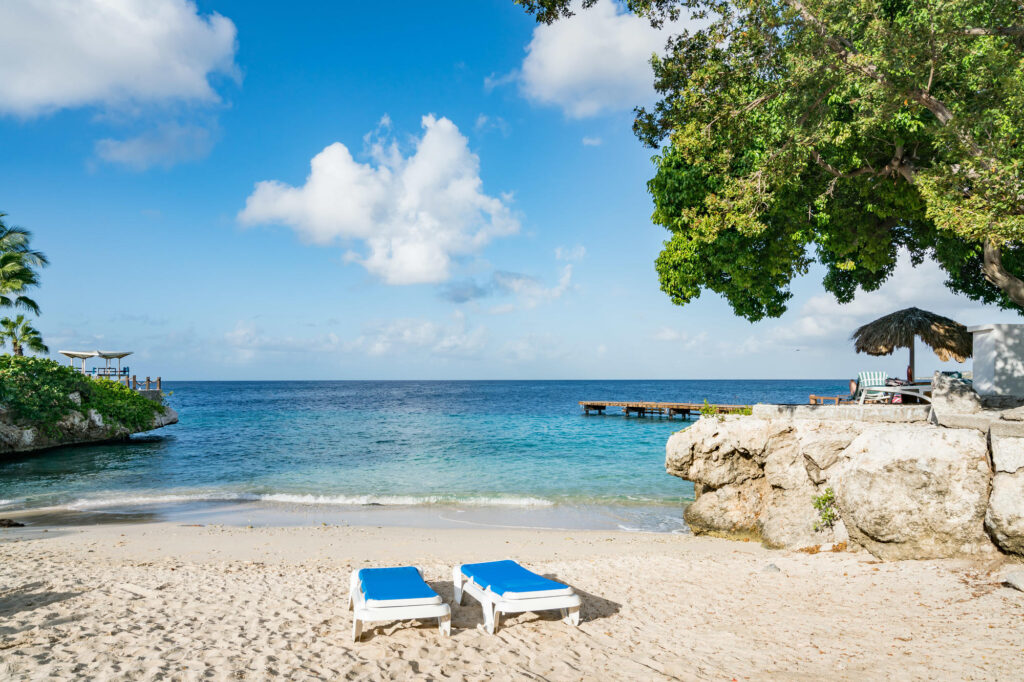
The third of the Dutch Caribbean’s ABC islands, Curacao has the same track record with hurricanes as the neighboring islands of Aruba and Bonaire. Curacao receives fewer visitors than Aruba, but packs more cultural offerings and beachfront development than unspoiled Bonaire. The capital, Willemstad, features immaculately-preserved Dutch colonial architecture with bright pastel hues, especially along the waterfront of St. Anna Bay. The downtown Pietermaai District is home to numerous museums, galleries, cafes, and the quintessential Blue Curacao Experience, where visitors can sample and learn about the island’s famed liqueur. Outside of town, the island’s striking topography unfolds into rocky peaks, groves of cacti, and a stunning craggy coastline full of isolated sandy beaches and caves. Christoffel National Park dominates the island’s northern end, with several hiking trails crisscrossing the arid terrain and summiting Curacao’s highest point, Christoffel Mountain. There’s also ample diving and snorkeling opportunities, especially off west coast beaches like Daaibooi Beach and Grote Knip.
Our Curacao Hotel Pick: Sunscape Curacao Resort Spa and Casino
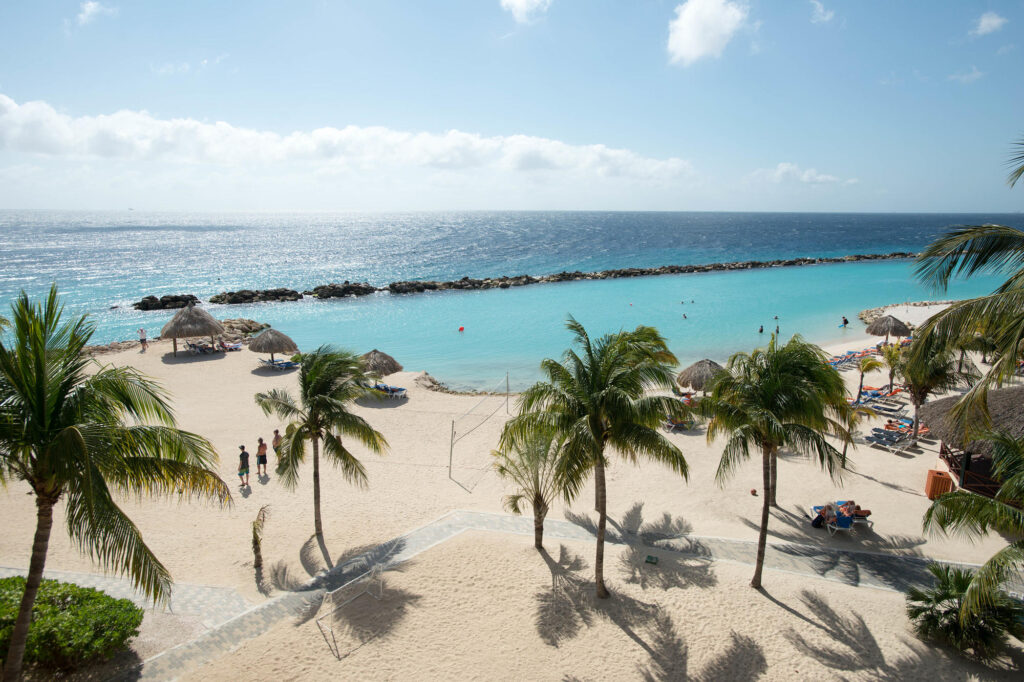
The Sunscape Curacao Resort Spa and Casino is ideally situated along a gorgeous sand beach on the outskirts of Willemstad’s historic center. The all-inclusive property has multiple bars, restaurants, and pools. There’s plentiful activities on offer too, including snorkeling and kayaking right offshore.
Trinidad
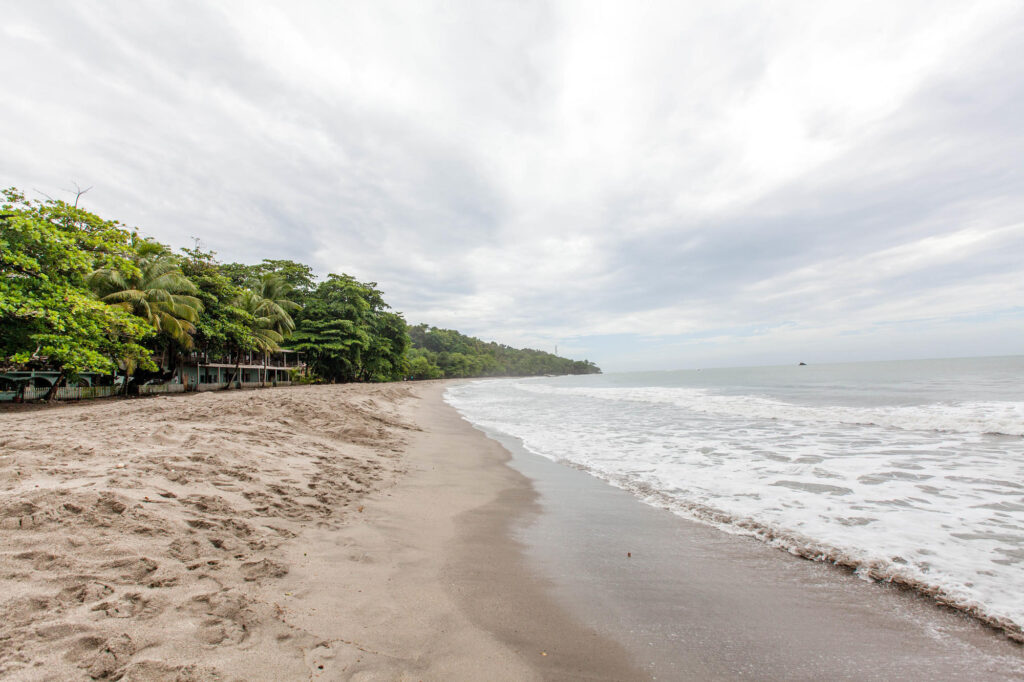
Located just off the coast of Venezuela, Trinidad’s southern location means it rarely sees hurricanes. The most recent was Hurricane Isidore in 2002, though it’s worth noting that the storm was classified as a tropical depression when it passed the island. The only notable hurricanes to impact Trinidad happened as far back as 1933 and 1963, so it’s still an unlikely scenario. Trinidad is quite large by Caribbean island standards, meaning that most travelers stick to a region or two during their visit. The dual island nation’s capital, Port of Spain, is located on Trinidad. The port city is a bit industrial due to trade and oil, but don’t discount its diversity of museums, historic sites, markets, and lively bars and restaurants. The city also sees one of the most exciting carnival celebrations, though you can still find calypso music and other festival throughout the year, such as the Trinidad + Tobago Film Festival in September. Trinidad’s mountainous and jungle-clad interior affords excellent hiking, bird-watching, and other nature-based activities. The Asa Wright Nature Centre comprises 600 hectares of protected forest teeming with biodiversity and some well-marked trails. The northern coast has some of Trinidad’s most picturesque beaches. Las Cuevas Beach lines a calm half-moon bay that’s perfect for swimming and snorkeling, while more remote Grande Riviere sees leatherback and hawksbill turtles arriving in mass to lay their eggs until as late as August.
Our Trinidad Hotel Pick: Salybia Nature Resort & Spa
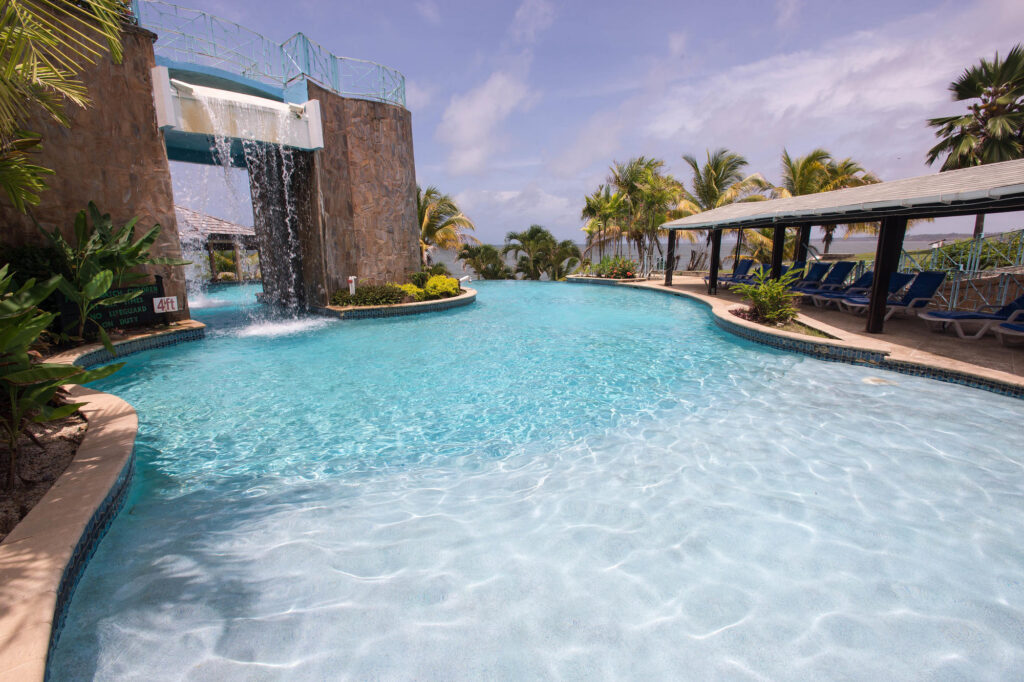
Guests at the Salybia Nature Resort & Spa will have both white-sand beaches and gorgeous jungle scenery right at their doorstep. All guests have private balconies and access to a serene infinity pool, while Luxury Suites and Superior Deluxe rooms come with hot tubs. The property is located along Trinidad’s remote northeastern coast on Saline Bay.
Tobago
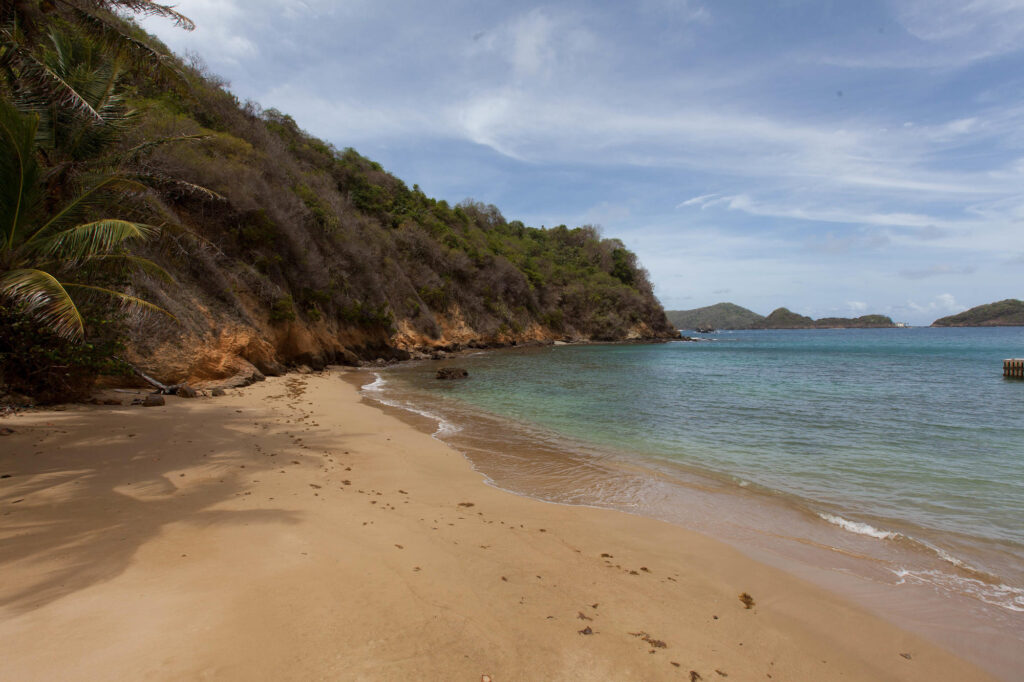
Tobago’s location is a bit more exposed than its big sister island, but it’s still far to the southeast from the Caribbean’s hurricane alley. The most recent devastating hurricane to reach Tobago was Hurricane Flora in 1963. Tropical storms do periodically impact the island, though the primary concern is flooding from heavy rainfall rather than strong winds. Tobago is much more tourism-oriented than Trinidad — but still maintains its pristine nature and laidback charm. Tobago’s main town, Scarborough, is smaller and less industrial than Port of Spain. King George serves as a scenic backdrop to the town’s buzzing bars and markets. Even Tobago’s most popular beach, Pigeon Point, has just a few beach bars and water sports outfitters along its idyllic arc of golden sand. Head farther east to find solitude in the lush protected jungle of Tobago Main Ridge Forest Reserve or along stunning beaches like Englishman’s Bay and Pirate’s Bay. The latter requires a short, but steep trek from the quaint town of Charlotteville.
Our Tobago Hotel Pick: Bacolet Beach Club
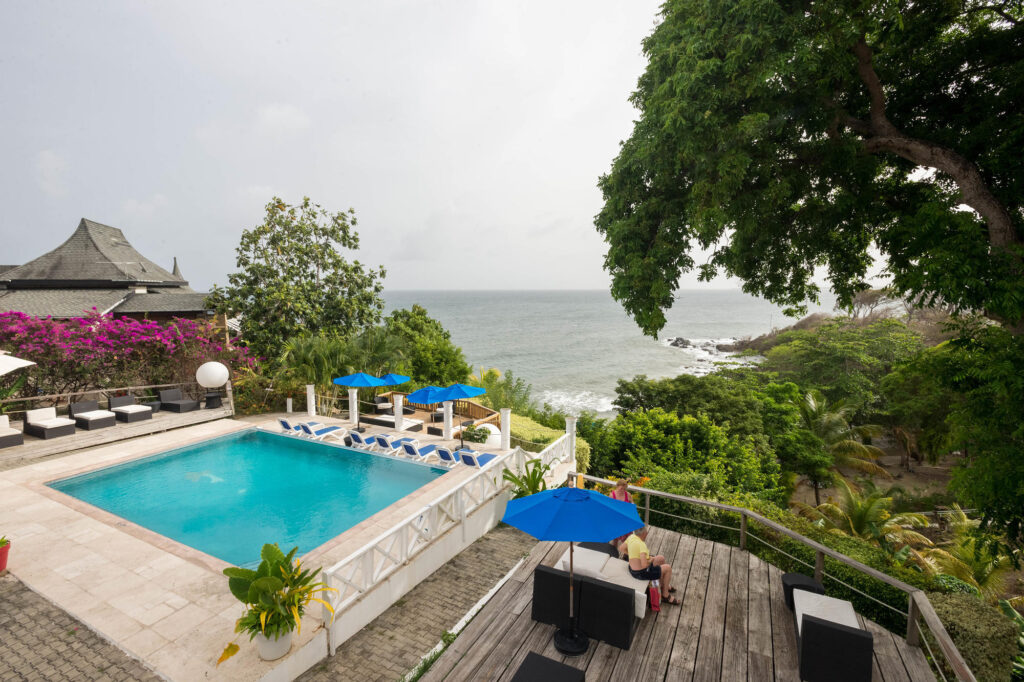
Bacolet Beach Club occupies a picturesque perch above Rockly Bay, which guests can enjoy from the comfort of private balconies. With only 60 guest rooms, the property’s two pools, two restaurants, and private beach remain uncrowded. Also, downtown Scarborough’s restaurants and shops are just 15 to 20 minutes away on foot.
Little Corn
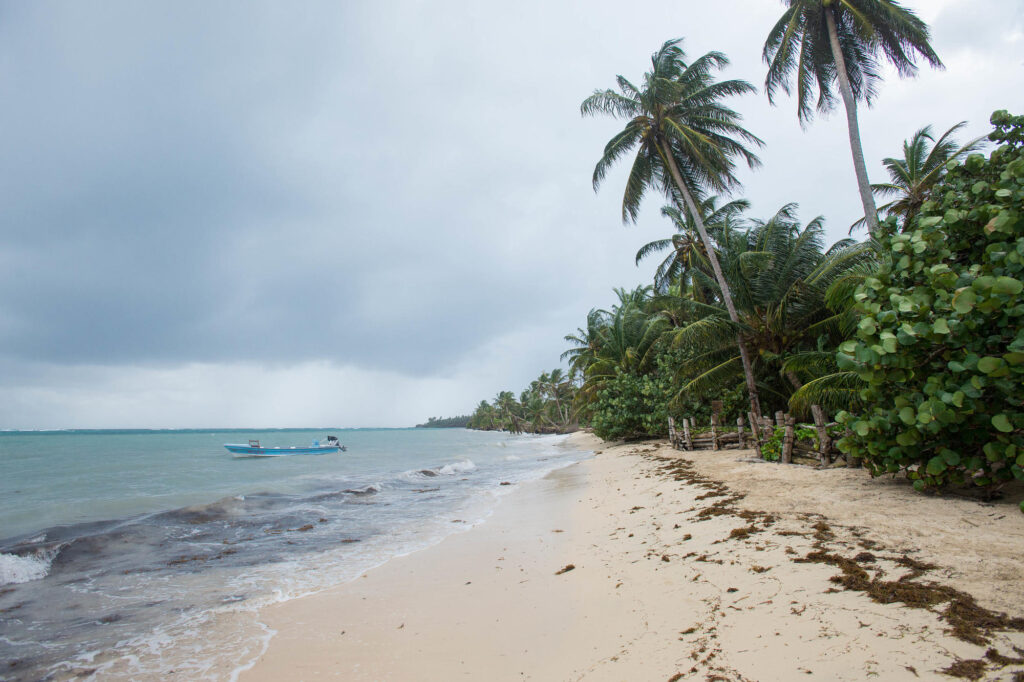
While the tiny, square-mile Little Corn island was devastated by Hurricane Joan in 1988 and experienced damages from Hurricane Eta and Iota in 2020, the overall frequency of extremely severe hurricanes is comparatively low. The local Afro-Caribbean culture is unique in this part of Central America and much more evocative of other Caribbean island nations than mainland Nicaragua. The island’s perimeter is almost entirely ringed by white-sand beaches and can be easily traversed between breakfast and lunch. Though the beaches are all public access, hotels make an effort to keep lounge chairs and hammocks for guest-use only. Little Corn’s eastern coast has easily accessible and shallow coral reefs offshore for snorkeling. Come nightfall, travelers congregate at the handful of bars near the ferry port. Each venue takes turns hosting parties and theme nights per each night of the week. Its tranquil beaches and remoteness are perfect for unplugging.
Our Little Corn Hotel Pick: Little Corn Beach and Bungalow
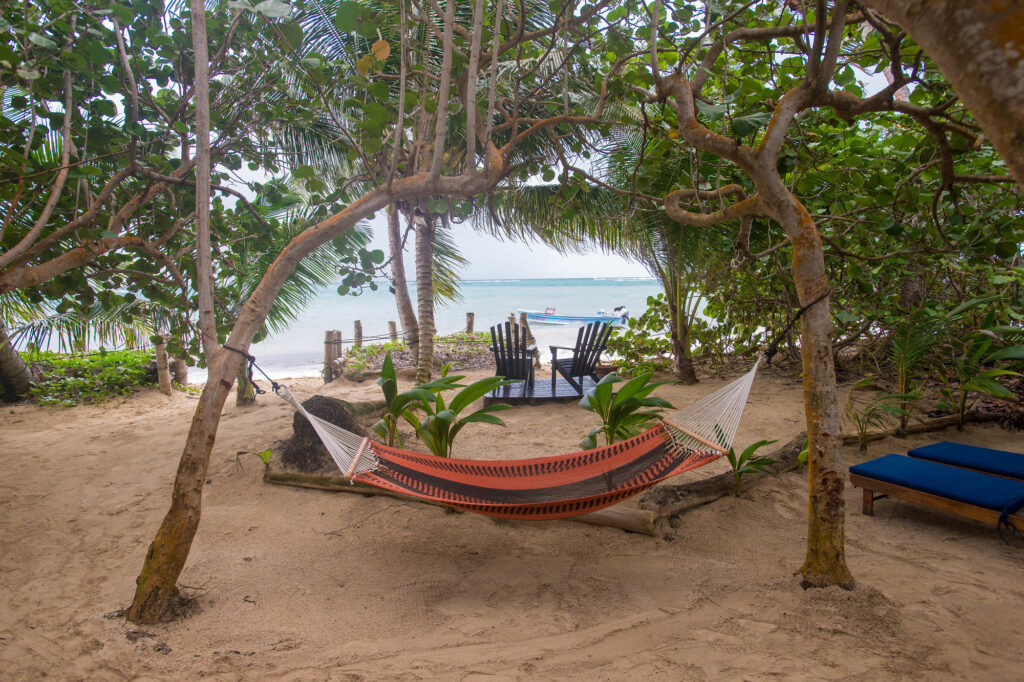
The stand-alone cottages at Little Corn Beach and Bungalow have well-furnished terraces facing out towards the ocean and palm groves strung with hammocks. The Turned Turtle Restaurant serves a rotating menu of fresh seafood and international items.
You Might Also Like:
• Cancún vs. Cabo: Which Mexico Travel Destination Is Better for You?• The Ultimate Packing List for a Beach Getaway
• What a Week-Long All-Inclusive Vacation Costs in Top Destinations
• 8 Erotic Hotels That Swingers Will Love
• 23 Quintessential NYC Winter Experiences You Can’t Miss
All products are independently selected by our writers and editors. If you buy something through our links, Oyster may earn an affiliate commission.



